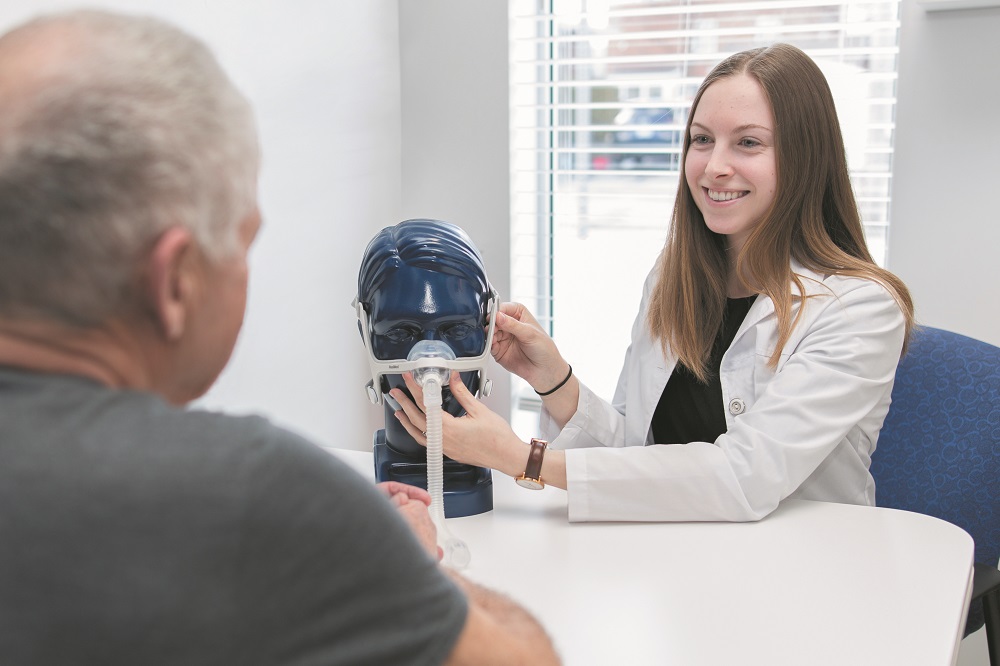For many people with obstructive sleep apnea (OSA), the first sign that something is wrong is unrelenting daytime sleepiness. That’s because OSA causes the airway to narrow or collapse until the person wakes up to take a breath—five to 30 or more times every hour. Once these exhausted patients are diagnosed, the standard treatment is continuous positive airway pressure (CPAP), a bedside device that sends a continuous stream of compressed air into the airway to hold it open.
While CPAP can return both breathing and sleep to normal levels—and slash the risk of heart attack and stroke in the process—one detail can make a significant difference in how well it works: what type of mask is used.
Researchers reported in Chest that when patients wear masks that cover both the nose and mouth, they often have less relief from their OSA and poorer adherence to the treatment than patients who choose nose-only interfaces.
“An oronasal mask required higher pressures and resulted in less control of apnea,” says Ann Augustine, MD, assistant professor of neurology, Duke University School of Medicine.
Nose vs. mouth breathing
To learn more about this difference, the researchers zeroed in on people with a history of breathing through their mouths some or all of the time. For each person, they used a process called titration to determine the optimal air pressure that would be tolerable to the patient and eliminate obstructive events with both a nasal and an oronasal mask. For patients who breathed through their noses, the researchers were able to find an air pressure that eliminated all apnea events with both masks. The oronasal mask, however, consistently required a higher air pressure to be effective. When using an oronasal mask, close to half of the people who breathed through their mouths at least 25 percent of the time could not be successfully titrated. Even at the highest levels of CPAP treatment, they had residual airway closures.
Take-home message
The researchers stressed the importance of using a nasal mask whenever possible. Many people can transition to nose breathing by using select strategies, but not everyone can. That is where oronasal masks take a starring role. They may not perform as well as nasal masks when people can choose between nose and mouth breathing, but they make CPAP treatment possible for those with chronically stuffy noses. Even nose breathers turn to them when allergies and colds hit. Many CPAP users keep both masks handy so they can choose the best care when they need it most.
“The best mask is the one that you can wear throughout the night, every time you sleep,” Dr. Augustine concludes. “For many people, that is a nasal mask. It uses a lower effective pressure and has a smaller profile that covers less of the face, which can be more easily accommodated in side and stomach sleepers.”
Airway Mechanics
The pressure transmitted when breathing through the mouth, the researchers explained, neutralizes the positive pressure applied through the nose. In a previous study published in Sleep Breath, researchers observed this effect with magnetic resonance imaging. They discovered that when a person using an oronasal mask breathes through the nose, higher air pressure causes the space between the hard palate and the inferior aspect of the soft palate (retropalatal space) to become progressively larger, as one would expect. But if that person breathes through his or her mouth instead, the retropalatal space becomes smaller as air pressure rises.


